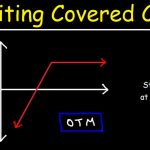Section 54EC

Introduction
A long-term capital gain is any revenue that you get from the sale of an asset. The asset could be land, property or even investments. According to the Income Tax Act, you are liable to pay tax for such gains.
However, you can reduce the liability of these taxes.
Invest in section 54EC bonds, also commonly known as capital gain bonds, to avail tax deductions in the future. The bonds are issued as per the provisions of the section 54EC of the IT Act. These bonds are issued by certain permitted Public Sector Units which means these entities are backed by the government.
54EC bonds, or capital gains bonds, are one of the best way to save long-term capital gain tax arising out of sale a capital asset. The maximum limit for investing in 54EC bonds is Rs. 50,00,000.
Individuals as well as members of HUF can make investments in 54EC bonds. You should invest in 54EC bonds within 6 months of transferring capital asset. Take a look at the benefits of investing in 54EC bonds.
The eligible bonds under Section 54EC are
- REC (Rural Electrification Corporation Ltd),
- PFC (Power Finance Corporation Ltd) ,
- NHAI (National Highways Authority of India)
- IRFC (Indian Railways Finance Corporation Limited)
General Features
- Interest: The section 54EC bonds offer an interest rate of 5.75 percent. Interest is earned annually. Interest earned on the bonds is taxable.
- Safe: The capital gain bonds are AAA rated and are secure. They are backed by public sector enterprises, and so the default rate is low.
- Tenure: You can invest in these bonds for five years, which is also the lock-in period.
- Transferability: The 54EC bonds cannot be transferred from one person to another at any point in time.
- Investment limit: You have to invest in a minimum of one bond that is worth Rs. 10,000. The upper limit is 500 bonds, worth Rs. 50 lakh in a year.




